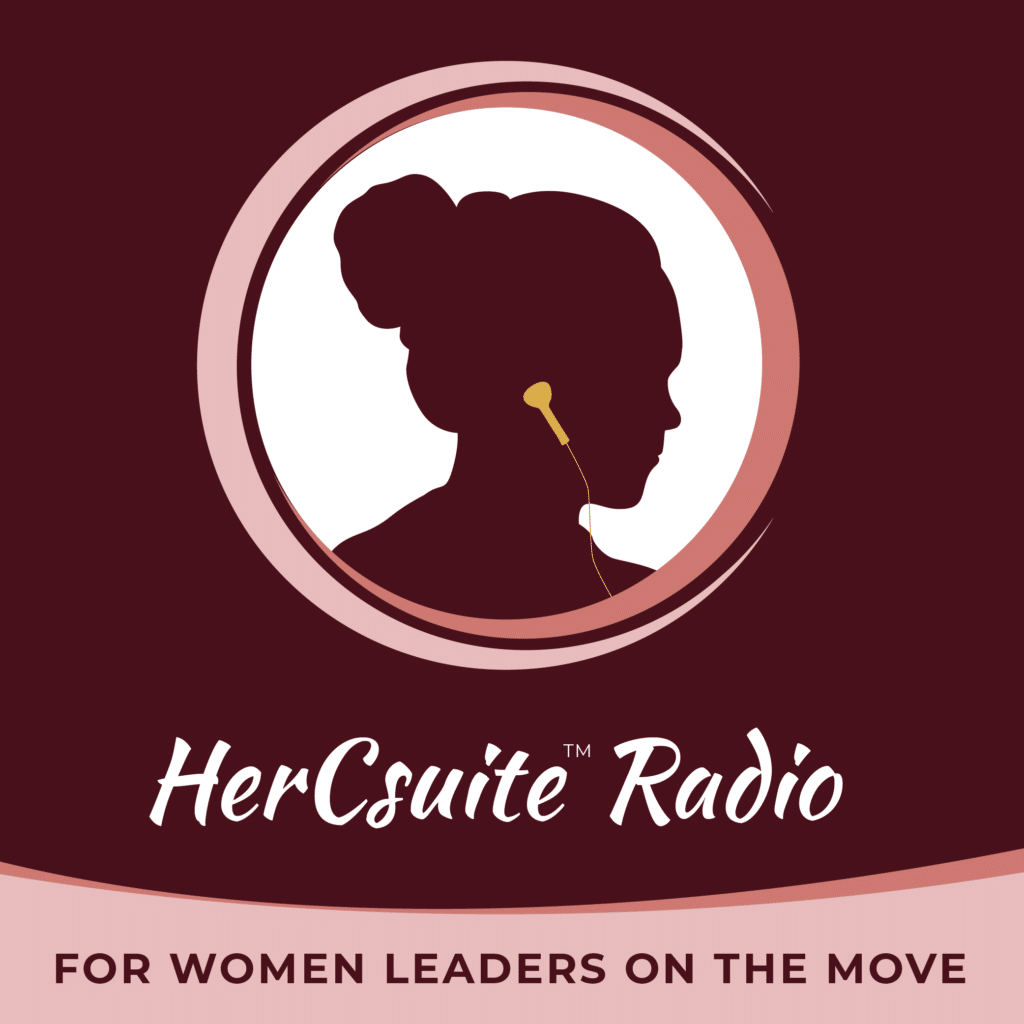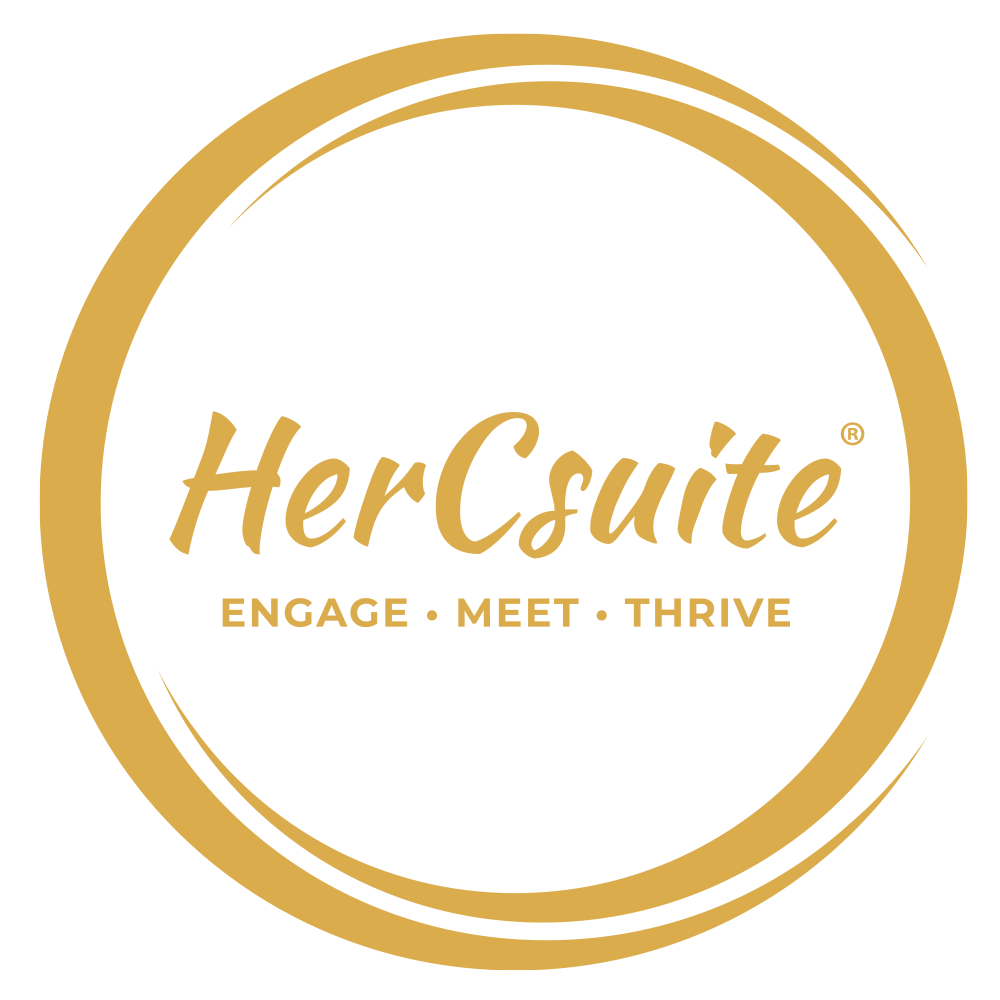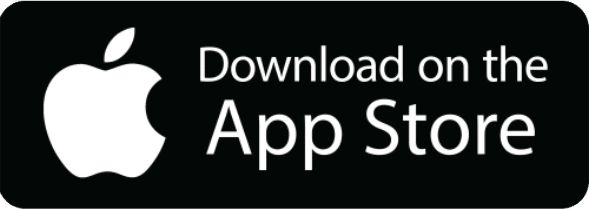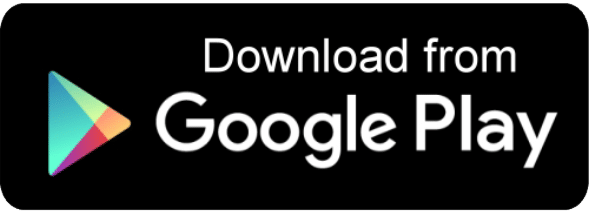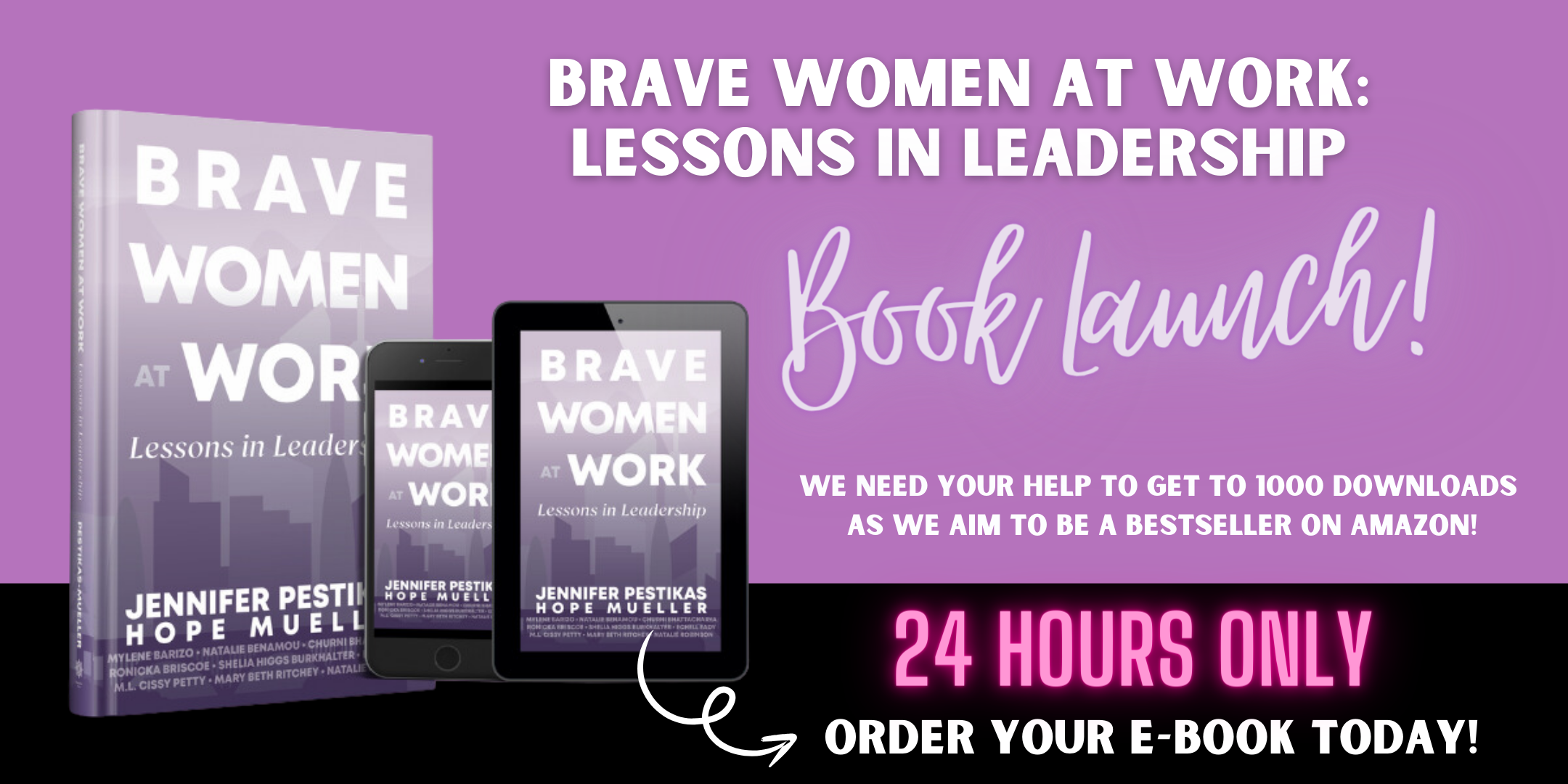3 Ways To Make Meetings Better With Laurie Wessels, HerCsuite™ Mentoring Chair And Executive Coach
Do you feel like you are in meetings all day long? We often joke about “death by meetings”, but it’s a real problem that plagues organizations everywhere. How many organizations do you know have a good meeting process that allows the most value to come out of a relatively short meeting time? People are the greatest asset, but struggle to organize their time in a valuable way. Across all industries and organizations people feel a pressing need to make meetings better.
Where do we start? In this episode of HerCsuite™ podcast, Natalie Benamou is joined with HerCsuite™ Mentoring Chair and Executive Coach Laurie Wessels.
If you have been wanting to get time back in your day, make meetings more productive and make decisions, this conversation is the perfect way to get started. Laurie shares three ways to make meetings better. It all starts with understanding our values and what matters most.
Laurie calls this concept, “What is Most Important”(WIMI) a practice she uses to help clients save time, reduce cost and become more productive teams.
Three Ways To Make Meetings More Effective
- Make all meetings 45 – 50 minutes.
- Always have an agenda and send it out in advance.
- Know the purpose of the meeting: share information, make a decision, or get input.
Ready to find out how you can make good decisions? We have a Targeted Problem Solving Workshop that helps leaders practice the art of effective meetings. Turnkey Speaker Events Schedule a call to learn more.
This episode is being released on International Women's Day. Join us for our Embrace Equity Panel at 12 PM CT: https://evt.to/aissaemsw
HerCsuite™ Radio is sponsored by our Leadership Development programs and our Circle 8 program for high potential women.
HerCsuite™ Founder and Podcast Host Natalie Benamou can be found on LinkedIn | HerCsuite™ LinkedIn | HerPower2 LinkedIn
Thank you Laurie Wessels for being HerCsuite™ Mentoring Chair, our Executive Coach, and for being on the show. We appreciate you, for listening to the show and shining your light in the world! We would be honored if you subscribed and shared this episode with a friend or colleague today.
—
Show Transcript:
Laurie, I'm so excited to welcome you to the show. Thanks for being on the show.
Thank you so much for having me. It's a pleasure.
It has been way too long since we last recorded an episode. This is going to be so much fun to catch up and share some powerful insights with our audience. Before we get started, I have to first thank you. I know we talk about it in the show and all the places, but you are the reason that I'm here. When you were president, you saw this light in me and you were like, “You can do this.” You nominated me to be president of HBA. That was the starting point for coming here all these years later. I'm so grateful to you for everything that you do as a friend, advisor, and someone who is my mentor. Thank you.
Thank you. That brought tears to my eyes. That was very lovely. You did it yourself. You just had to know you could do it.
It helped to have someone in my corner, so I'm grateful to you.
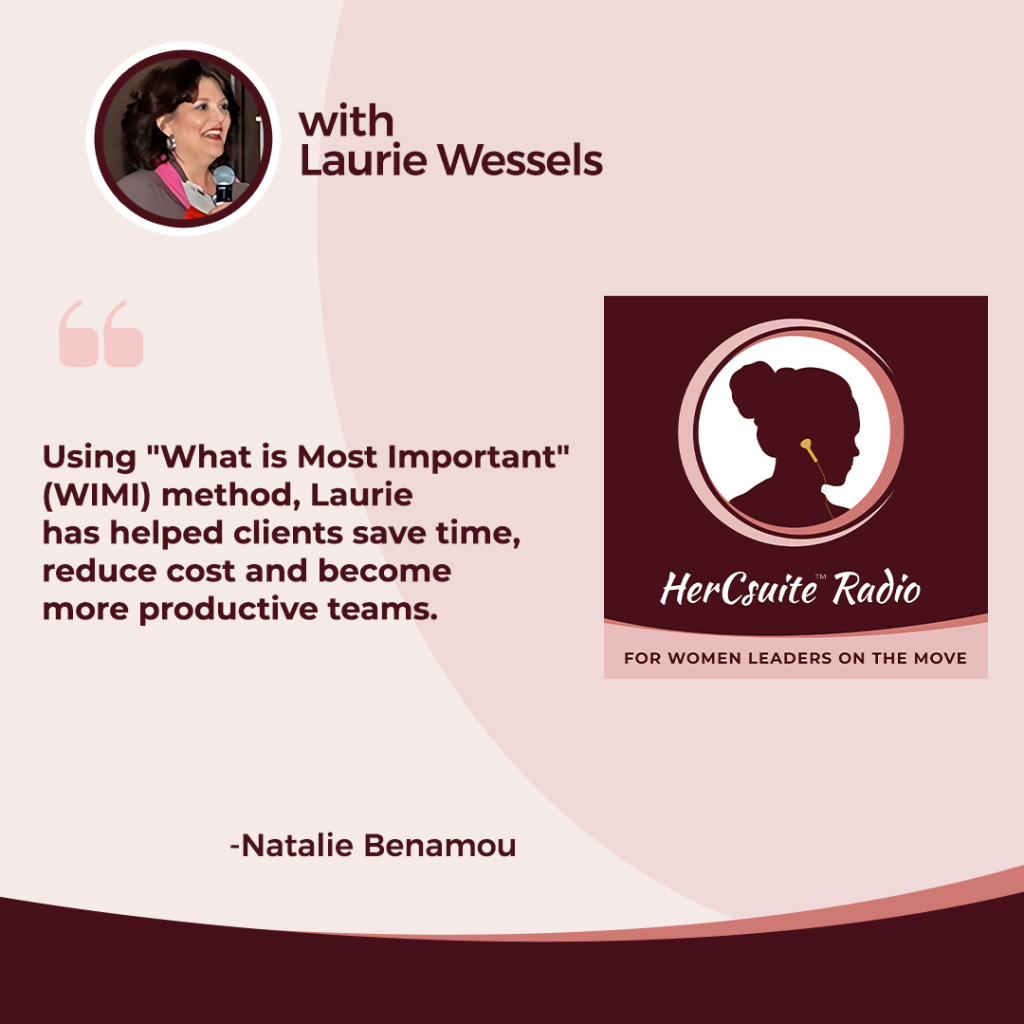
I don't know anyone who has worked harder to get where they are. You don't underrate and estimate how much work you've done to get here.
I want to first start with the question that I always ask. Can you share a little bit about the arc of your career and what is bringing us to this moment and where you are now?
I started my career in pharmaceuticals and went through different roles from sales, marketing, product development, etc. About 23 years ago, I decided that I like developing people more than drugs. What does that look like? I found this leadership thing. I was like, “What can I do with that?” I found out I could be a coach. I could teach. I could train and help organizations with their leadership models, looking at how they look at leadership, how they're creating their leadership, universities, etc. I fell in love with that, and it evolved from there for the last 20-some years.
How we met is I took on my own leadership roles in organizations such as the HBA and being on the board. Those kinds of things taught me even more skills about how to work with leadership on boards, etc. Our lives have come together at the right time. It has been a very fun journey. It was not an expected one but a fun one.
One of my favorite things that you share about yourself is how you describe where you are on bringing a smile to Corporate America and all the things. You have this beautiful visual that you share about waves. Can you mention that? I love it so much. I want our audience to know.
First, let me tell you how I got here. After I left pharma, I became a nobody again. I felt like I was schlepping the sales bag all over again. I didn't realize how much my identity was tied to my title in PhRMA and that positional power. I had to re-examine things. By reading a lot about identity, values, and purpose, I realized that I wasn't the title, the job, and that position. I was what I give to the world. I have several identities depending on which hat I'm playing, but I do believe in transformation. The one you're referring to is I'm the master surfer on the waves of transformation. That one brings a smile to my eyes too.
I love it so much.
I've got several. It brings me back to who I am.
That is one of the things that I'm learning from you constantly. We've been preparing and working on a mentorship program together for one of our big clients, Horizon. Learning from you and the questions that you ask, you have this ability to get to what matters and clarity like nobody I know. You get right in there. It's like, “That is what I'm trying to get to.” When you think about how you help leaders find that value or find who they are, what is it that helped you figure that out? It is such a gift what you do, and most people can't do that. I'd love for you to share that.
Everyone can do that. It's not easy to do it by yourself. I learned it from other master coaches as well. There is a bit of a process in understanding what values are or what purpose is. It comes from your heart. It's not an intellectual exercise. That's one of the challenges. We try to read a book and do these intellectual exercises. That's not where you find it. It is a process.
There is a process in understanding what values are, what purpose is, and it comes from your heart. It's not an intellectual exercise. Share on XWe can have a session sometime with some clients and do values, purpose, and identities, and have a good time. People transform when they get clear on who they are, what their purpose is, and what they value most. It's a fundamental base like that foundation that you need to stand strong and confident in any situation. When you are reaching and you connect with who you are, why you're here, and what's most important to you, people have a very strong foundation. Other people see that because most of our communication is non-verbal. When you have that in your body, mind, and heart, people notice you in a different way.
I am so glad you mentioned the notice you part because that's where we're going to go in this conversation about meetings. People are in hybrid now. They're in-person, and then they go online, or they're in different places. One of the things I hear so often from both members and leaders in HerCsuite™, but also in talking to clients that we work with is that meeting component, getting visibility, having people recognize you, and knowing your values is part of that.
Who you are and what matters makes it so that you can have that contribution. What is it that people need to think about as they're preparing for a meeting? You have to think about meetings differently. You can't go back-to-back, hour-to-hour, or eight hours in a day, and expect to be able to have that visibility. That's the first piece. What should people be rethinking about that first?
It's interesting that you mentioned meetings. They call it death by meetings. We used to have a joke. It was like, “Are you lonely? Have a meeting.” We were constantly meeting and it's so much worse now than it ever has been. There are a couple of things that you touched on. What are some practical things you can do about meetings? Separately, how do I show up in a meeting and how can I contribute to my true self way? Let's start with some practical things. Do you want to get those out of the way first?
Let's hit them out of the park. Let's go.
These are going to be simple, but they're not easy. Most companies don't have discipline. That is to say, you shorten the meetings. Do not send out hour-long meeting invites, or you have an unspoken rule. If the calendar process you use doesn't allow for 50 minutes or 45 minutes, you have the discipline that you end the meetings either 10 minutes before the hour or you start 10 minutes after the hour. You get your meetings down to 45 to 50 minutes.
When I've done this with companies and when I force the issue and they start living it, they realize they're not missing any meeting. You get the same amount of time. If you have time vacuum, you use it up so everyone is thinking in a meeting. They don't get serious until about 10 to 15 minutes before the meeting is over. The last 10 to 15 minutes of the meeting is when you get something done. Otherwise, it’s junk and talk.
That is a simple but not necessarily easy way to give people some time between meetings to breathe and process a little bit. It's difficult to go into a high-level, critical, and serious conversation meeting, and then move into the next one. Your brain needs a break. Your body needs a break. I highly recommend for the health of an organization to consider doing that and make it a policy.
The second thing that's very practical too is if you're facilitating a meeting, have an agenda and send the information out before. Always let people know before the meeting, at the start of the meeting, or at the end of the meeting, what the outcome is. They get talking in these meetings. They're like, “We had this conversation before. We didn't resolve anything. We're having the same conversation and we're not resolving anything again.” As a facilitator, if you set the meeting up and own it, then you need to facilitate it. You need to keep it on track. You need to make sure, “Are we working toward that outcome?” That's another special secret sauce that is so simple but no one does it or they don't do it well.
The third thing is having a good decision-making model. These are the practical things. You got to have a good decision-making model. You've got to have a way to have those conversations. You've been in meetings where somebody says, “This is what we're going to do,” and then somebody else says, “I don't understand what the problem is.” Somebody else says, “We should think about this or this.” It goes nowhere. Everyone is talking around. No one is in the same conversation. It is having a good model that brings you toward decisions and allows you to have the conversation where you are all having the same conversation. If we're having a conversation about what the problem is, let's stay there. We don't move on until everybody agrees and so forth.
There are various models out there. I've created one that's been popular. Also, because of it, they're getting to decisions faster. They're having more effective conversations. They are able to cut those meetings shorter and get to decisions faster. What's the reason for the meeting? Meetings have a couple of reasons. One is to share information, make a decision, and get input. That's it. Otherwise, you don't need to have a meeting. Those are the three main reasons.
Meetings have three main reasons: to share information, to make a decision, and to get input. That's it. Otherwise, you don't need to have a meeting. Share on XThose are the simple and more practical things that organizations should do. Not many organizations have good decision-making models that everyone uses. You’d be amazed. They don't have good meeting processes or good operating principles around meetings. If they would just take the time, it's amazing what can happen. Look at how much time we spend.
It’s hundreds and thousands of hours, depending on the size of the company that they get back on productivity and the business if they eliminate this. One of the things I hear a lot about is the number of people that are invited to a meeting. We had weekly or monthly meetings for big congresses. We would have 26 people in that meeting. It was a strict agenda. We were pretty tight on all the things you're talking about. It was like, “Here's what we're going to do. Here's what we're going to talk about.” I have heard that there are people that have 26 people in a meeting when you just need four to make that decision. For a manager to director person who is observing this, how do they bring that forward to say, “If we had these people, this would help and we would feel confident about it.”
First off, it depends on the purpose of the meeting and its critical nature. If we're in a discussion and we're trying to figure out options for a solution, you need only the key stakeholders, the people who make decisions, and/or if somebody is a high influencer. You keep it small. You go to the larger group when you've got a good framework or you've got your options clear, and now you want to have a larger discussion, and bring people in. You give them the background. You give them, “Here's where we are. We want to bring you all in. Now, we'd like your input.”
If you do it that way where you have a small group, then you share with a larger group. Let's say you have 3 or 4 options. I would break people into smaller groups. Give each group one of the options to hash out, “What do we know? What don't we know? What haven't we considered?” There's a meeting process. It is called something café. It is World Café maybe. What they do is put options on the wall. Small groups will start with one option. They'll talk and write all over this flip chart, whiteboard, or whatever they have. They add their things, and then they move on to the next option or the next issue.
Let's say you have 4 groups of 5. That's twenty people. Maybe you have 6 groups of 5. It doesn't matter what the numbers are. You have each group go to each issue and put their questions down and write. Everybody has input, but it's not this massive conversation that goes nowhere. You need to break it down into smaller pieces. That's how I usually do it when I'm facilitating very large groups. I somehow break down or we're voting on things.
If we come to a point where it's like, “Let's take a vote. Let's see what democracy says,” everybody has their own pen, stamp, or whatever. They vote for the best options. You are, at least, narrowing down the goal of a meeting to whatever you're doing to bring it forward. The next meeting, you take it from there and move forward until you end the project or whatever it is.
Few people look at it. They start at the same place and talk about the same things. Someone is not taking notes. It goes on and on. It is having someone truly take notes because if people make commitments or we're at that accountability stage where people have to bring things, information, research, or whatever it is, it's recorded so that people come prepared for what they're supposed to contribute.
There are a lot of AI tools, especially Zoom. I know people use Teams. I don't know what it would be in Teams, but with Zoom, you can get Ottr or the transcription services if you don't want to be taking notes. It's not perfect. We use transcriptions in our show. We have editors that edit the transcriptions so that it makes sense. Sometimes words don't make sense, but it still helps. If you're in the moment or you're presenting and you don't want to be writing, then it's easy to get a transcription service to help with that, and then you send it out to everyone.
I had someone once back on Rock Your Trade Show, my previous show. She talked about meetings. She said, “When you come to the next meeting, what you're talking about is, ‘Here's the decision we made last time. Now, we're going to build on it.’” You recap that action and then build on it. You’re like, “Here's where we got stuck. We're going to keep going,” instead of what you were saying, which is, “We're going to go through the same agenda over and over again.”
That's when people tune out, to be honest. They turn their camera off if they're online. They start multitasking and are like, “I’ll wait until I hear something and come back,” which makes it even worse because the people that are trying to make things happen are sensing that no one is engaged. That’s one of the things.
One of the things we hear about also, and I know you've heard this in some of the masterminds that we do, is the idea of I don't want to say idea stealing, but it does happen. Especially if you're so excited and you bring forward an idea and are moving this along, and then someone comes in and acts like it was their idea. They squash all over you about it. Being the person who had the idea, you take a step back. Your body language changes and it's all visible. You maybe go off-camera. What are some best practices for that to bring it all back both as a leader when you're observing it and as the person that it happens to?
It's hard to hear everything that's being said all the time. At least you might hear it, but you don't understand it because people maybe aren't communicating it that well. Sometimes, it's very unintentional. People hear something and it goes into their unconscious brain. All of a sudden, they go, “What if this?” They don't realize that somebody had already said that. It used to happen to me all the time, and I used to think it was a male-female thing. They listened to the guys but they didn't listen to me.
I'm not sure. There are a couple of things that I learned to do. One is to set a very good context for what you're going to say. When I say context, framing it in a way that people are listening. It’s like, “I've got three ideas that I'm thinking about. I'd like to share it with the group if that's okay.” You frame it like, “I got something important to say,” and you wait until people are listening.
That is so good. That's fantastic.
Oftentimes, people aren't listening, but it goes into their brains anyway. I don't think most people are trying to steal other people's ideas. It’s just the unconscious brain and the way they're processing information. A lot of people process things differently. Some are auditory – they hear something and they can get it and put it back. They spit it right back out. Other people are visual – they need to see the model or the diagram or how it networks and fits together before they see it. Other people need to have experience with it; they need to feel it.
I'm both visual and kinesthetic, which is the feeling part. I'm not auditory at all. In fact, to practice my auditory, I have to listen to podcasts and audiobooks. I'm constantly having to rewind and go back because it takes me a little longer to process. I got to put the picture in my head, and then I can get it or I’m like, “How would I feel?” I go through a different process than others, which is why I was always good in lab classes or experiential kinds of courses, not the written memorization like, “Read a book and spit it back out.” That was the worst for me.
Understand that everyone has different ways that they process information and it may take them a little bit longer. You have to frame, “I've got something to say that's important.” Also, when you are setting that context, set it in a way that people want to hear, “I've got an idea that will solve this issue,” or “I've got maybe an idea that would involve everyone.” Instead of just spitting out the idea, you are framing it in a way where people stop and listen. That's one that is important because so many people blurt things out and you have no context. Where does that fit?
I have one last question about this. We were talking about this at a previous meeting. It was a very effective meeting. We were talking about understanding and you were talking about framing things. You have this great acronym to identify what is most important. Can you share that and how that works? It makes a difference in meetings. I am 100%.
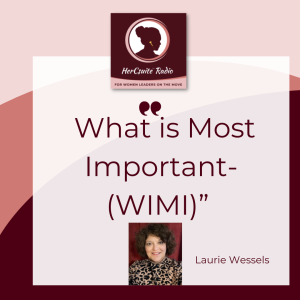


It’s called WIMI. If you take anything away from the episode, live with this. It will change your communication forever. WIMI stands for What Is Most Important. It's not a why question. It’s a what. It functions differently in our brains. What Is Most Important allows for people to sort and have that critical thinking of most important. There are all kinds of things that are important. We could laundry list a lot of things for whatever we're doing, but what's most important?
When you are helping someone make a decision, “What is most important about this decision? What is most important for us to accomplish at this meeting today?” Sometimes, I'll start saying, “What's most important for me to walk away with from this meeting is this.” It could be personal. It could be for everyone. It can be outcome-based, value-based, or hierarchically ranked most important. It can be asked in any situation and at any time. One of the reasons why we don't get things resolved well when you say, “I get to the heart of matter and clarity” is from using that. Oftentimes, you'll say, “We could do this, but what's most important to accomplish? It cuts through everything. It helps other people get clear.
If you start the meeting and you are the meeting leader, you ask people to clarify, “We met on this last time. Here was the outcome. Here are the actions. Here’s what we're going to work on and what's most important for this meeting.” When other people are framing that like sharing the three things that you were talking about, it’s like, “Here's what's most important that I want you to know about to help get to the solution.” That would wake people up right away if they heard that, “That's a different way to describe it. I'm going to stop multitasking and listen. What is Laurie talking about?”
“What's most important?” All of a sudden, people listen. There are many ways to accomplish something. Oftentimes, people say, “What do you want me to do?” I'll say, “What's most important is at the end of this, we have this. How you get there is your thing. You can decide that. If you need some help, I’d be happy to help you, but this is what it must have.” Have you ever delivered something that you thought was accurate and it turns out that's not what they wanted?
Yes. That happens.
We've all had that. It's amazing. It's because we did not ask those questions. This goes back to, “How do you have a good meeting?” The question is, “How do you ask good strategic questions?” Innovation is about good strategic questions. It's an art. It's a great skill to learn. I highly recommend everyone to study and find out how do you ask good strategic questions, and go deeper into understanding. You don't just stay at the surface level.
Think about an iceberg. At the surface, it's only 20% of the iceberg. We need to go to what's underneath that in order for the Titanic to not sink. You have to go deeper and see what don't we know and what goes underneath all of that. It does make a huge difference in how your meetings go and how your conversations go. WIMI is at the heart of that whole strategic principle questioning.
I always say, “What does success look like for you?” I'm going to rephrase that after this conversation to say, “What is most important for you to achieve success?” That is a clarifying twist that I could say to someone. I'm excited to try that out. I love it. It’s so good. We could go on. We have so many things that we could talk about. We will come back and do another episode. I'm excited to have you on the show. If people want to learn more about you and find you, where should they go?
I'm on LinkedIn. My company is called Wessels Group. There is a website. Anyone can find my number or my email. Send me a message. Probably LinkedIn is the easiest that everyone uses these days.
For our members, you can always get ahold of Laurie on our platform and at our programs. I'm so grateful to you for being our mentoring chair, advisor, all the things, and an incredibly valued and amazing founding member of HerCsuite. Thank you, Laurie, for being here. It's been wonderful talking with you.
Thank you, Natalie. It's been a pleasure. It's always wonderful to work with you and see you.
About Laurie Wessels



Among her numerous offerings, Laurie has created a “Decision Making Model” that incorporates the “Four Circles of Clarity”, transforming transactional results to those of high value results. A simple, dynamic model, that clients have used for problem solving and creative solutions, consultant training, coaching skills, team and meeting effectiveness, and overall “High Value Relationship Conversations”. The ROI of implementing this model results in creating meaningful change, critical problem solutions and positive impact on financial performance.
Laurie has also created and executed numerous mentoring programs for corporations and professional organizations, such as the Healthcare Businesswomen’s Association and Women in Bio. She is also a Menttium Mentor, a global mentoring program.
Laurie is a highly experienced executive coach and consultant, committed to the growth and development of organizations largest assets – the strengths of their people. Laurie is a Certified Executive Coach, Certified Leadership Circle Coach, Certified Results Coach, Certified Teacher of Movement Psychology, and founding member of the International Consortium of Coaches Organization. She has served on numerous non-profit boards and is an active member of the Healthcare Businesswomen’s Association and Women In Bio. She has been featured on I Heart Radio Network WRNW, is a professional keynote speaker and moderator of webinars for numerous professional organizations.
She has designed coaching and leadership programs for numerous companies. She has also worked closely with Corporate Boards and Equity Firms, identifying CEO and Executive Leadership Team candidates.
Natalie Benamou
Founder, CEO
HerPower2, Inc, | CGO HerCsuite™ | Podcast Host HerCsuite™
Natalie founded Herpower2, inc. to create products under HerCsuite™ to empower women to make a lasting impact today and into the future. She takes a ‘serve first’ approach to life and has applied this principle throughout her career, serving in leadership positions in business as well as non-profit organizations.
Share this story:
HerCsuite® is an official product of HerPower2 Inc. | all rights reserved – Privacy Policy – Terms & Conditions

